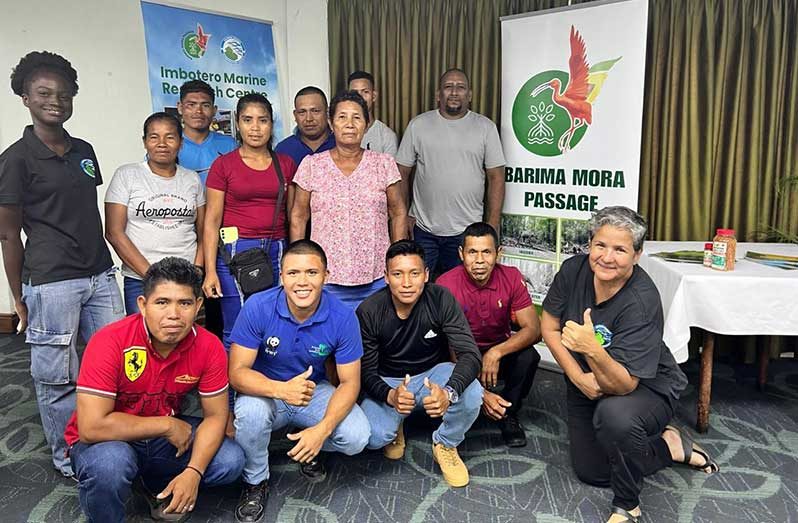–participants receive training in governance, leadership, natural resources management, and tourism
NINE members from five communities in Region One participated in an experiential exchange programme in Region Nine, organised by the Guyana Marine Conservation Society (GMCS), from September 1 until September 10, 2024.
According to a press release, the initiative was funded by the European Union (EU) under the project titled “Developing the Capacity of the Barima-Mora Passage Communities in Natural Resources Governance”.
The participants included Desmond James, Toshao of Red Hill; Monique Henry, Treasurer of Three Brothers; Orin Sam and Yoland Sam of Imbotero; Jerry Bumbury, Smith Creek CDC Vice Chair; Greg Thomas, Smith Creek Councilor; Alexander Mendonca of Aruka; and Zaheer Khan and Sylvia Williams of Morawhanna.
The project works with Warrau Indigenous communities, who have had little formal exposure or training in natural resource management, monitoring, and tourism.
Due to challenging literacy capacity among the communities, learning by seeing and doing (experiential) is an important means to build capacity through engagement with various partner organisations and Indigenous communities in Regions Eight and Nine.
The experiential exchange participants from these Barima-Waini and Barima Mora Passage Communities in Region One, visited the Caiman House, Shulinab village, and Wichabai Ranch to experience first-hand and learn about governance, leadership, natural resources management, and tourism from a Region Nine community context.
They also engaged with the South Rupununi Conservation Society and received hands-on training in wildlife conservation activities.
These Indigenous-to-Indigenous community peer exchange of information and experiences provide valuable insights and learning opportunities that will benefit and strengthen Region One communities and their own practices.
It is part of GMCS’ commitment to support culturally appropriate learning for Indigenous peoples.
During their overnight stay in Georgetown on the way to Lethem, on September 2, the participants also benefitted from a workshop on village mangrove action planning and leadership lead by Governance Consultant, Sara Bharrat and supported by Annette Arjoon-Martins and Chelbie Gilkes of GMCS.
During the EU-funded project, GMCS will continue to engage the BMP communities in building their natural resource management capacity, including establishing and strengthening the governance of Village Mangrove Action Committees (VMACs) while amplifying the voices of women and girls. This initiative complements Guyana’s national framework set-out in the National Mangrove Management Action Plan.
“GMCS extends sincerest thanks to the EU for funding this project initiative and its continued support in the important work of protecting and managing mangrove forests and other natural resources in Guyana. The latter is a significant part of the country’s response to mitigating the impacts of climate change,” the society said.





.jpg)








